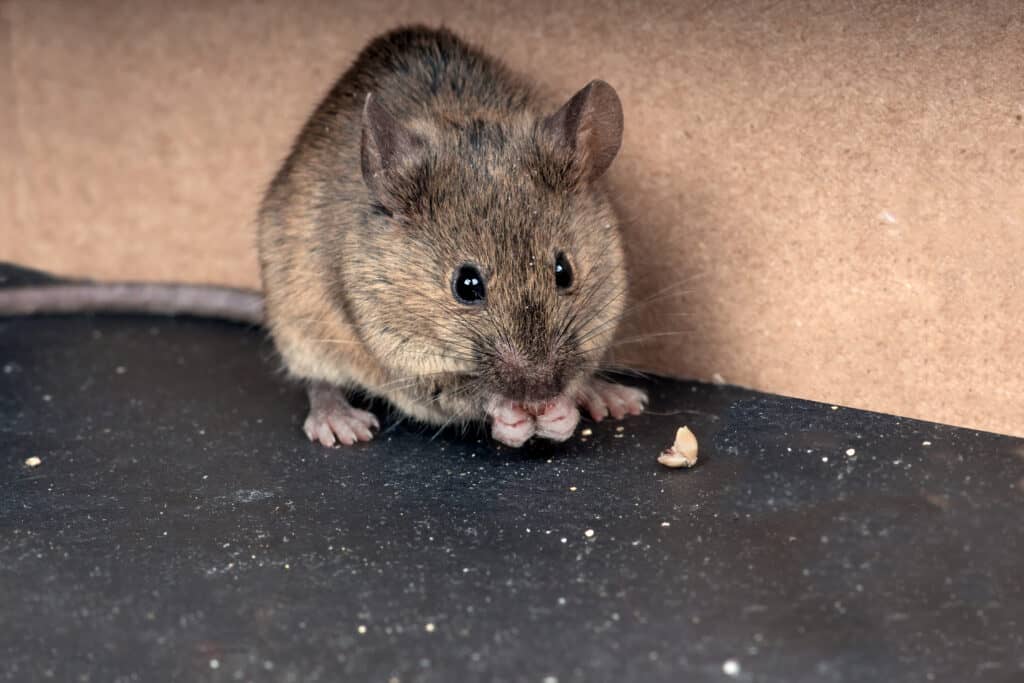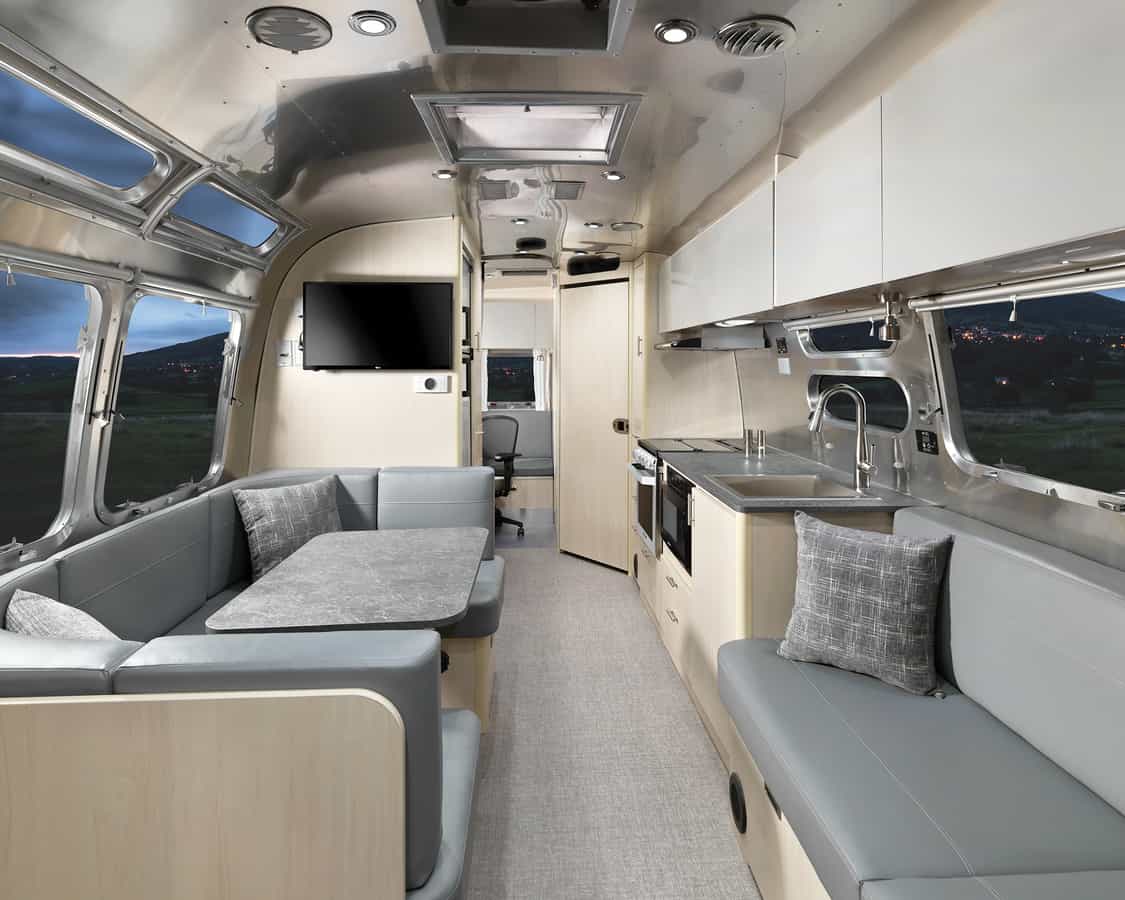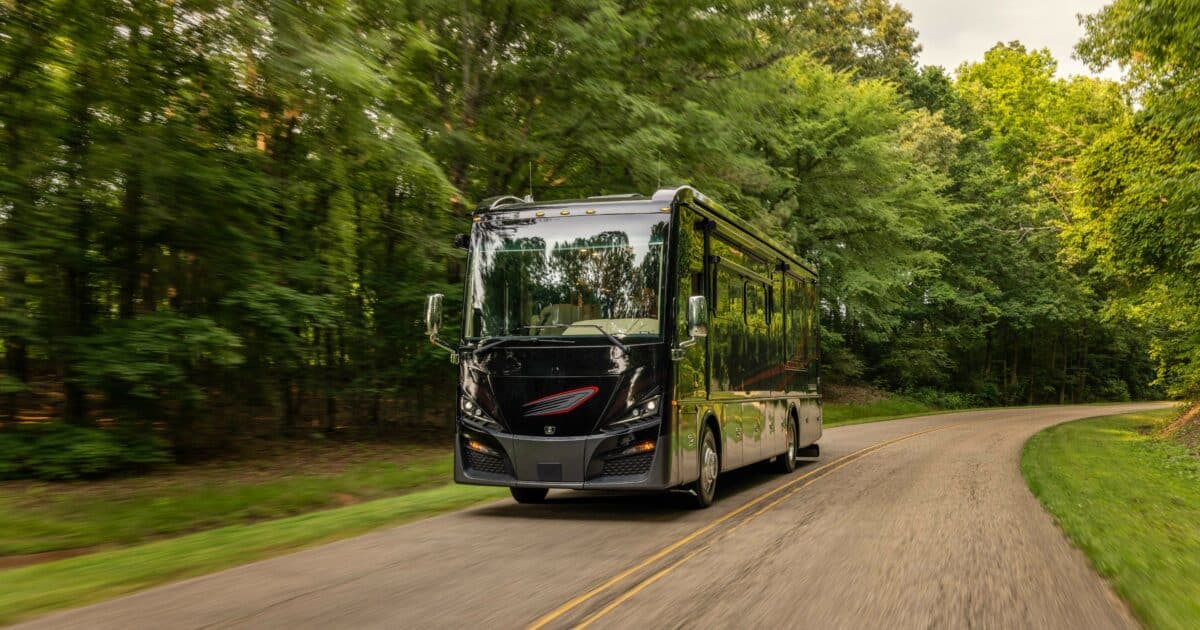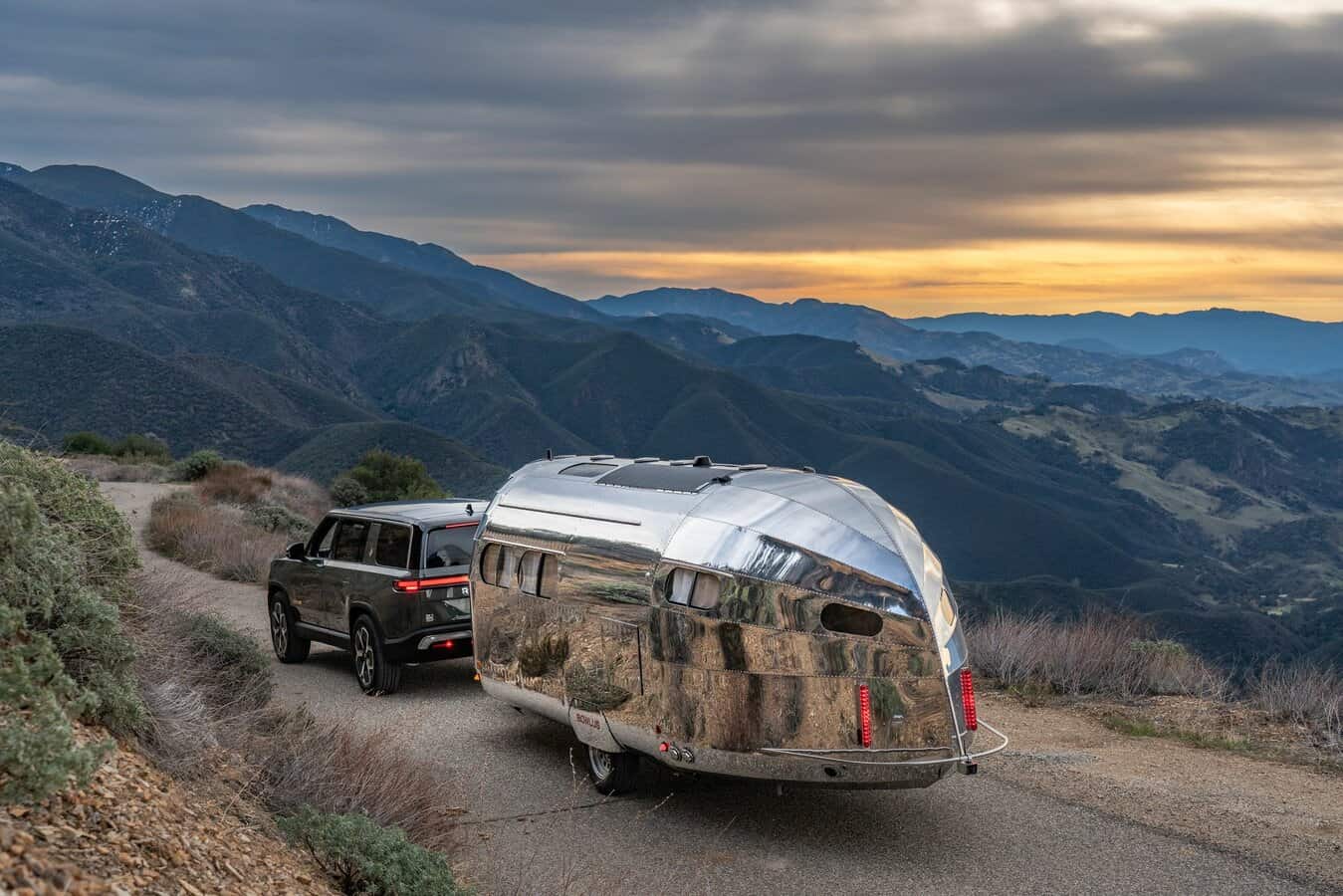
How To Mouse Proof A Camper
Mice love RVs almost as much as we do! These little critters are always on the lookout for a safe place to nest, hide from predators, and maybe eat a few crumbs off the floor. RVs are a great place for them to fill all of those needs, so a lot of owners are looking for ways to keep their vehicles pest-free. It’s always good to know how to mouse proof a camper and there are many ways to do this.
Mice can wreak havoc on your RV and nobody likes to have little pests living in their walls or cabinets. They can also chew through your electrical wiring and leave droppings all over the vehicle.
While you could always call an exterminator, there are also many solutions you can try yourself first. These range from preventative measures to active trapping/killing methods. Maybe just one will be effective, but it’s usually best to use a range of different techniques for the best results.
Remove food from stored RVs
One of the best things you can do to keep mice out is to remove any tempting morsels that might lure them in. Mice have great senses of smell, and they can sniff out any food that is left in your RV, even dry goods that don’t have much of a smell!
So whenever you leave your RV empty for long periods of time, make sure you clear out all your food storage. This is a good habit to get into anyway because you don’t want to let food rot or go stale in between your travels.
Keep your cabinets and pantry doors firmly shut as well so that any little intruders won’t be able to access them. Consider adding locks if you want to be extra safe.
Keep floors, cabinets, and work surfaces clean
Another great method for how to mouse proof a camper is to leave a clean slate every time you store it. Mice, insects, and other pests may be attracted to crumbs, food spills, and other morsels that are left behind. It’s a good idea to regularly sweep and clean your RV regardless of pests, but make sure you’re extra diligent about it if you want to avoid attracting mice.
After every RV trip, do a thorough cleaning and wipedown of the floors and work surfaces. Doing this will also help you notice if there is any mold, water damage, or other problems you need to be aware of. Make sure your camper has plenty of airflow during this time as well so you can clear out any leftover smells of food. If the mice don’t sense any food, they’re less likely to target your RV.
Block off openings
Even if you remove all your food and leave it looking spick-and-span, mice may still be attracted to the safety that your RV provides. After all, it’s still an enclosed area that’s insulated and safe from predators. They will try to get in any way that they can, so it’s important to seal up all the entrances you can think of.
Obviously, you should always close the doors and windows, but mice can also get in through air conditioning vents, hookup outlets, and any other small openings. If your RV is parked under a tree or is near a rooftop, mice can even drop down from above.
Seal off all the vents and openings with covers. For an extra layer of protection, you can also place steel wool inside all of the openings. Adding a few mothballs can also make it smell less appealing and provide another layer of blockage.
Use an RV cover
For a final layer of protection, consider using an RV cover. These will help you in your quest of how to mouse proof a camper and they will also provide protection from UV damage, bugs, dust, and other debris.
Although mice can usually chew through fabric, a cover will serve as an added layer of protection that will hopefully discourage them. The harder you make it and the less appealing your RV is as a hiding place/source of food, the better off you’ll be.
Install LED lights under RV
Another tactic for how to mouse proof a camper is to play off of a mouse’s natural instincts. These little critters are prey animals and they want to avoid being out in the open as much as possible. They are also nocturnal and usually travel in the dark.
Installing LED lights on the exterior of your RV will light up the area around it, making the mice feel exposed and scared to approach. You can install these lights under the vehicle as well because this is where the majority of them will approach from. This may end up attracting bugs, so it’s up to you to weigh the pros and cons.
Use traps
Of course, once mice are actually in your RV, you need to find a way to get them out. Using poison is not recommended because it can be harmful to children and pets. There are lots of different mouse traps you can use depending on whether you want to catch and release the mice or just kill them.
Snap mouse traps are quite common and effective. They are easy to reuse and are cheap. However, they can be hard to set up and can hurt humans as well if we’re not careful!
Glue traps can catch all sorts of pests. They are effective, easy to set up, and you won’t have to handle the mouse that gets caught. However they each can only be used once and they are considered to be quite inhumane because most of the trapped mice die a slow death from starvation.
If you want to catch and release a mouse, you can use a live-catch trap. This will trap a mouse in an enclosed space where you can safely pick them up, carry them outside, and release them. It’s always possible that mice will continue to return though, so this is one of the less effective methods.
Try scented deterrents
Mice have good senses of smell and there are some scents that they tend to avoid. You can try spraying or placing these scents around your RV (especially around entrances). Some deterrents to try include:
- Mint
- Cayenne pepper
- Mothballs
- Peppermint
- Cinnamon
- Vinegar
- Dryer sheets
- Tea bags (peppermint is best)
These may have varying degrees of success, especially if they sit for a long time and begin to lose potency.
Ultrasonic Sound Device
Finally, you can try using an ultrasonic sound device as part of your efforts into how to mouse proof a camper. These are small electronic devices that emit an ultrasonic pitch that humans can’t hear. Mice have sensitive ears and will want to avoid anything that is loud or distressing.
The downside of this tactic is that dogs and other pets may be affected by it as well. If your furry friend often hangs out near the RV, they may become distressed and irritated by the noise. If you don’t have pets though, this can be a good method to try!
Make sure you keep track of all your RV maintenance and repairs with an online tool such as RV LIFE Maintenance. Not only can you keep all of your documents in one place, but you’ll also receive timely reminders when maintenance is due to help you avoid costly repairs and potentially serious accidents.
Related articles:





Fresh cab
Pour urine around your vehicle. Cheap and effective!
We have used the ultrasonic plugins for 7-8 years. Both as part timers and now for 2 years full time. We have 2 inside and put one in the storage area. We haven’t seen any signs of mice. We also used them in our home during this time before going full time. One fall we had one get in the house, but that was a far cry from the many for years prior to the plugins. More humane and keeps us safe from destruction. I highly recommend trying them.
Mice and at least one larger rodent, thought to be a rat, got into my underbelly last winter at our mooch-docking location. I just finished rebuilding my Suburban furnace’s wiring, all my heat ducts, and wiring on the Suburban water heater as well as a few miscellaneous wires throughout various portions of the belly.
They chewed through the foil of the flexible heat ducts which gave them access to floor vents, furnace / water heater closet, living spaces, electric closet and elsewhere. I’ve rebuilt with robust rodent control installing wire mesh “hardware cloth” on the openings of my furnace diverter, duct discharge vents, cableways between electrical, furnace, water heater, underbelly passages, under-sinks, and floor openings; as well as using considerable amounts of steel wool. Tip: rats and larger rodents are not deterred by small gauge steel wool, but, they are stopped by 4-0000 (“4 ott”) steel wool, otherwise known as large gauge.
Electrical wiring insulation can be made of resins derived from soy beans and upon heating up under load are an enticing attractant for fury creatures. They will chew, and chew, and chew. They chewed several inches of insulation from the high temp wiring in my furnace’s burner chamber, thereby shorting it and preventing it to start and run.
I replaced all my heating ductwork with heavy duty aluminized duct work which will hopefully prevent future intrusions.
Tip: mice are deterred by spray foam insulation sealing holes in your underbelly openings around leveling, stabilizers, gas and electric lines, but not rats and larger rodents. I’ve removed spray foam plugs from my underbelly’s openings and have created closures made of Coroplast sheets and positioned them in place with the plastic snap-clips used in automotive applications to attach body molding, bumper covers, spoilers and the like. I cut a patch slightly larger than the hole and poke holes through the patch and the underbelly cover, also Coroplast or similar, then insert the plastic clips to hold it together. I’ve reinforced a few of these patches with belly tape – very strong stranded tape used to join sections of belly cover.
All these materials mentioned can be purchased on-line at the typical site named for a South American river.
Be extremely cautious of using steel wool around your electrical wiring and heaters as it is often used as a fire starter in camping applications and will burn with intensity if subjected to sparks or arcing.
I can’t emphasize enough the importance of plugging all holes. Mice can enter through openings as small as a nickel. Their chewing, nesting, living and dying, defecating and urinating will ruin your RVing experiences and cause considerable damage.
We live in the woods and have had problems with the wiring in our vehicles getting chewed through. The second time we took my husbands truck to the dealership the mechanic told him about a spray than can be bought at any farm or home supply store. It is sprayed in the wheel wells, under the hood and underneath. Since we got it we have had no problems with critters chewing the wires under the hood.
Check The underside of your RV , The mat that is installed in the factory, lays on the top of your trailer frame, it is secured at the front and back of the trailer, but not on the sides, it lays on the frame, I used 4INS Gorilla Tape under the Mat and frame , so far I have checked The trailer three times per week ,so far there are no Mice , last year I found 3 nests .I live in Canada it is the end of November here , Still no mice.
I use spring loaded kill traps baited with rasins placed at the roof a/c unit under the cover. I also set traps at each end of the camper at the toung & rear bumper as well as inside where wires & plumbing lines pass from the sub flooring to the living areas. Works like a charm!
We’ve tried everything since we owned a motorhome for 35 years and the best results we had
was with Irish Spring. We usually use 6 or more bars in the cabinets, in the bins that have access to storage tanks. The mice really love chewing on the styrofoam and in the all these areas but with Irish Spring I have never seen traces of chewed styrofoam anywhere. Anymore!
What does Coast soap and Irish Spring have in common? I’m serious!
those ideas are good the soap does work. The problem is you really can’t block ALL the hole especially if you have any slides it simple can not by sealed completely. I store mine in the yard and have out door cats 2 that are fixed! no mice
Instead of playing around with steel wool or any other rust free type, use the rodent proofing foam spray, that can be purchased from any hardware or big box store.
First and only sure method: plug all the holes!
OK all great udeas but none have worked for us in Utah. The one sure fire works everything is shaving irish spring soap and spread in drawers clauses. 100percent works
Steel wool first, then the foam spray does it.
Irish spring bars- made me leave my space- but the little critters like them…lots of teeth marks! GROSS!
Very well said. I’ve thus far been very successful with some of these techniques. The cleaning after each usage, the moth balls and leaving the rv empty of any food after every trip. I also uses a Repel All repellent granular that I outline around the bottom of my rv outside when stored.
Hello All!! just started getting articles and they’re great, being in Canada, some information only applies to the USA, maybe you could talk about Canadian insurance down there, just retired and planning some of my winters in the sunny southwest, thanks, Mike
Thanks for the article, I needed your experience will be saving this one.
Note on the ultrasound devices: Don’t bother. They simply don’t work. Several controlled studies have documented it.
The only think I use that was not mentioned in the article is Irish Spring bar of soap shavings that the word is mice don’t like. Last year using the soap, ultrasound devices, and dryer sheets is the first time that we didn’t find one indication of mice in the RV when we got ready to take it out of storage.
We use the Irish spring soap bars and dryer sheets in our cabin. With good success. Now let’s talk about a snake!!
The mice in my house eat Irish Spring Soap. I put some under my kitchen cabinet and you can actually see the teeth scraping marks. Snap traps!
May i ask where all did u put soap shavings and dryer sheets??? I also thought bout spraying pinesol around the out side even on the ground they say they dont likd that smell either
Irish spring did not work for me. The mice ate half the bar of soap I left in the bathroom. I have tried almost all of the natural methods and nothing seems to work. I have to go under my camper in the spring and look for any holes I have missed.
Did you try cinnamon & dryer sheets If so, was it effective?
Irish Spring, dryer sheets and peppermint did not help. I used sticky traps and got 2 mice. We have a 35 foot motor home and have spent 3 solid days cleaning and sealing any openings. I’m exhausted and at this point, if I can’t keep them out, I’m getting rid of my motor home. It’s disgusting and I can’t deal with mice.
There is NO evidence that ultrasonic works! We keep moth balls in basement storage areas, also spread them around wheels on the ground with a couple perched on top of tires. Last, since we keep our rig at home we place poison on opposite side of house to attack rodents to that area, rather than Motorhome.
Not true! Installed them under trailer before skirting and never had mice when everyone else did. Also used them when backpacking AT Trail while staying in shelters. Mice just lined the wall and chirped at me, but none would come close. Everyone else didn’t know I had device and were asking why they were doing that. Used them in basement as well. Mice would run out from under cover while hiding and dogs finished them off. Maybe you should try a different device.
Richard, can you recommend what works for you on the AT. We used them in the Army back in the day. Thank you.
Good ideas but instead of steel wool use bronze wool. Same as steel wool but won’t rust which is critical if you are in humid, rainy or climate that results in condensation. Available by order from the big box stores like Home Depot and Lowe’s. Not much higher priced than regular steel wool but doesn’t make a mess due to rust stains.
I corral my wheels in with 8″ high cloroplast, the mice can’t climb up the smooth plastic sides.
Glue traps should be outlawed. They are way too inhumane!
Very “noble” of you to care for rodent welfare… Here in Queensland Australia, the little bastards are not universally loved by any rational section of the population… I spent quite a few dollars on a wide variety of what’s hopefully the rodent equivalent of “zyclon b” last week, for my currently pest free, recently purchased VW transporter campervan…
Send us your address and we will send you our live mice then
We have used a combination of products to ward off the pesky vermin! Conventional traps, sticky traps and coast soap. I believe, that by far the coast soap has been the best remedy! I see that some people cut the bars into smaller chunks, some shave them into slivers. I leave them whole and place them in several places that would possibly be a runway. So far, so good!